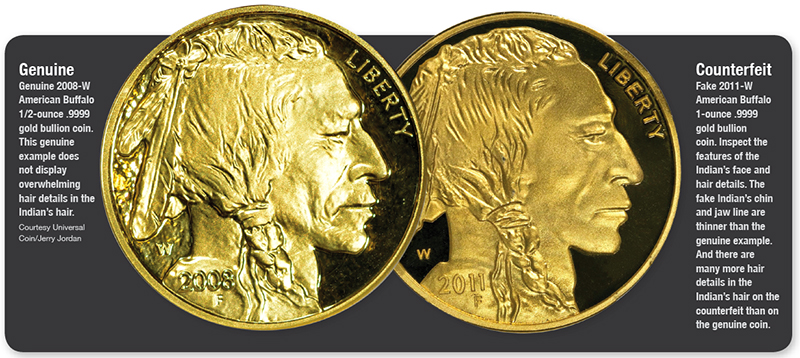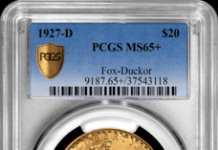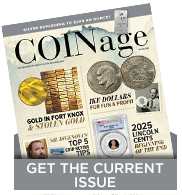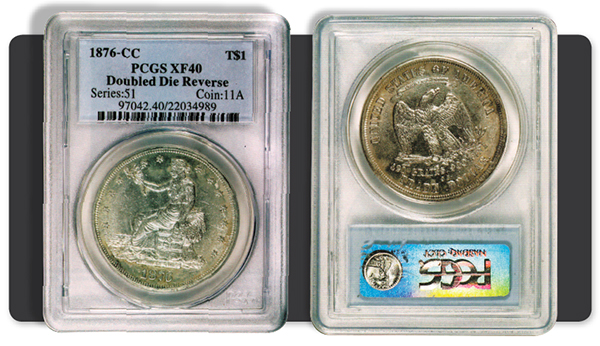
By Mike Fuljenz
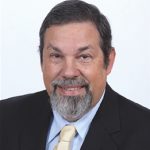
In the past year, I have reviewed several customers’ coin collections and sadly detected one or more counterfeit coins. In one instance, the majority of one person’s collection consisted of counterfeit proof Buffalo one-ounce gold coins, with all coins appearing in what looked like genuine NGC holders. The holders themselves were fraudulent. Many of these counterfeits seem to have been “Made in China.”
Other collectors I helped had counterfeit American Eagle gold coins, as well as counterfeit Morgan, Peace, and Trade dollars. Some counterfeit Trade dollars were easily spotted, in that they used dates when no Trade dollars were minted. In other cases, the counterfeit Morgan and Peace dollars were made of nickel, copper, and zinc and rang with too high a pitch compared to a real silver dollar when tapped with a pen.
I reminded this collector that it’s always important to know the reputation of the dealer from whom you buy coins. Does the dealer have multiple industry awards for industry service and contribution to the numismatic literature? Does the dealer have a long-term track record of honest dealing – a reputation that must be maintained by continuing to deal honestly? Does the dealer know how to spot counterfeits? These are the instructions I provided the Attorney General of Texas when I helped him with his gold coin Consumer Protection Alert.
I have taught counterfeit-detection classes for the American Numismatic Association and worked with law enforcement agencies and consumer protection agencies in helping to stop counterfeit operations. I am also part of the Anti-Counterfeiting Task Force supported by the Anti-Counterfeiting Educational Foundation, assisted by the Professional Numismatists Guild and directed by Beth Deisher. (Tax deductible donations can be made to the 501(c)(3) non-profit ACEF online at acefonline.org/donate/.)
If you are offered rare coins or bullion at too low a price, be careful, as you may be buying either an improperly graded coin or an outright counterfeit coin like my doctor friends.
Let Us Prey
One day in 1984, a physician walked into my office clad in his surgical greens, and he dropped a big safety deposit box on my desk. “Tell me these are not counterfeit,” he implored.
I opened the box and pulled out 10 coins. After I had looked at them, I said: “Four of these are butter, six are Parkay.” He did not think it was very funny. He wanted me to examine more coins. For almost two years, I had worked for a major grading service, teaching grading and counterfeit detection. We sent the coins to them, and they validated my original judgment.
The man who had sold these coins to the doctor (and many of his physician friends) was a local attorney. Because he was making so much money selling counterfeits to these unsuspecting doctors, he had practically shut down his legal practice. He haunted coin shows under the cover of buying counterfeits “for jewelry.” Dealers knew him as “the guy from the south who buys counterfeits.” Nobody suspected he was selling them to the medical profession as genuine.
The lawyers’ deception went further than bogus coins. He went to mass together with my friend. His brother was the monsignor at one of the local Catholic churches. They went to a Medjugorje retreat together. The doctor delivered his children, and they stood godfather to one another’s children. When the attorney had triple bypass surgery, the doctor had left his own work to stay by his bedside through the ordeal. All the while, the lawyer had been selling the doctor counterfeits and using him as a shill to hoodwink his doctor friends as well. The religious masquerade was the final twist of the knife.
When the Secret Service confronted the lawyer with his crime, he broke down and assumed a near fetal position right in front of them. Eventually, the attorney restored almost a million dollars to all the doctors he had defrauded. In the process, he threatened me over the phone, as the bearer of bad tidings, I suppose. But, in the end, he turned practically everything over to the doctors.
After everything was settled, one of the physicians in the group said to me: “Mike, if there is anything I can ever do for you, please just ask.” For my services in helping them recover their money, they paid me nothing. I did it for free because it was the right thing to do. I just wanted to help get rid of this crook and, in the process, clean up my industry’s own nest, so to speak.
In the process, I became lifelong friends with the doctors.
Mike Fuljenz, president of Universal Coin & Bullion in Beaumont, Texas, is a leading coin expert and market analyst whose insightful writing and consumer advocacy have earned major honors from the ANA, PNG, NLG, and the Press Club of Southeast Texas.
Want to receive COINage magazine in your mailbox or inbox? Subscribe today!

